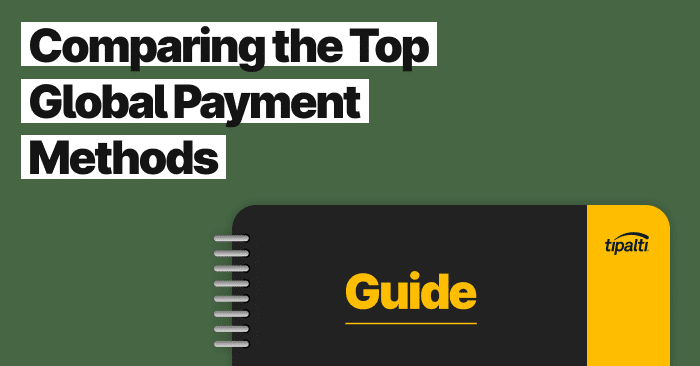
Learn how to expertly execute global payments for streamlined accounts payable and business efficiency.
Today’s advanced technology spurs more financial fraud. It’s simply the nature of the beast. As a business finds quicker ways to optimize the payment process through automation, active fraud prevention is necessary to protect the brand. This can be accomplished with a method called “positive pay.”
What is Positive Pay?
Positive pay is a popular automated cash service that helps banks detect fraud by matching the company’s issued check with the check presented for payment. The dollar amount, check number and account number must all match, or the check is flagged and sent back to the issuer for review.
If you see the statement, “this check clears positive pay” on your cashed check, then your check has been verified as safe to pay.
The positive pay system acts as a form of insurance for an organization against losses, fraud, and other liabilities. There is generally a charge incurred for using the service although some banks now offer it for free.
How Does Positive Pay Work?
To protect a business against altered, forged, or counterfeit checks, a positive pay service matches specific check data against a list provided by the company, prior to processing. This includes information like:
- Dollar amount
- Check number
- Date
- Account number
In some cases, the payee is also included on the list. When any of the data fails to match, the bank will not clear the check. These types of security checks are required so a company never honors counterfeit checks that slip through the cracks. It’s a form of automating your accountant’s eyes.
When the information does not match and the check is rejected, the bank notifies the customer through an exception report. It will withhold payment until the company advises the bank to accept or reject the transaction. The bank can also take actions like:
- Flag the check
- Notify a company representative
- Seek permission to clear the check
If there is only a slight error or minor problem, the business can advise the bank to clear the check. If your company forgets to send a list to the bank, all checks presented that should have been included, may end up being rejected. So, be careful.
Reverse Positive Pay vs. Positive Pay
Another form of positive pay is called reverse positive pay. This system requires the issuer to self-monitor checks on its own. This makes it the company’s responsibility to alert the bank to decline a check.
In this process, the bank will notify you daily about all presented checks and will clear the checks that are approved. If your business does not respond to the bank in a short amount of time, the bank will go ahead and cash the check.
Alternatively, the bank will decline anything you ask them to. Just remember, this method is a lot riskier than the automated positive pay process.
Preventing Check and Electronic Payment Fraud
There are many ways in which positive pay is a smart form of business banking. It simplifies the check cashing process, helps a business reduce errors, and saves on labor costs. Other key advantages include:
Check Verification
A positive pay check refers to a check that has gone through the positive pay review process.
Every check presented for payment is automatically verified. This includes checks presented at all banking offices. Positive pay will prevent payment of duplicate checks and also protect against lost or stolen checks.
Positive pay checks may be part of a positive pay file, which is a file consisting of checks written by an organization over a specific period of time. This file is sent to an organization’s bank, where all checks can be verified at once for a quicker cash-out. The bank will compare each check number and dollar amount against each cashed check.
Positive Pay Exceptions Definition
It’s possible to “fail” a positive pay review process for a non-fraudulent reason. For example, a company may transmit a file of issued checks for review to its bank, only to have a check presented that doesn’t have a “match” in the file. The check without a match becomes an “exception item” and the company simply sends an image or fax of the exception item to its customer.
Once the customer reviews the exception item, they’ll either approve it for payment or tell the bank to return the check.
Fraud Control
Positive pay dramatically reduces the chances of check fraud. It’s like having a set of robotic eyes to look over everything. A business has the enhanced ability to identify and return fraudulent items, including payee name suspects. A bank works with a company to verify you have actually issued/received the checks posted to the account.
It’s Always Your Decision
Ultimately, the business always decides whether to accept the check or not. You have the final call with positive pay. Online banking gives a brand the ability to easily monitor and make decisions about exception items and upload issue information.
Other key advantages include:
- Consistent account monitoring
- Less human labor costs and error
- A second set of eyes on all transactions
In Conclusion
The only time positive pay can go wrong is if your company is failing to monitor the exception list (i.e. what the bank is rejecting). You must have someone assigned to the daily tasks of looking over anything that doesn’t go through. The biggest mistake to be made is allowing a fraudulent check to pass simply because no one got to the list that day.
Positive pay enables a business to stay one step ahead of criminals and protect its cash flow. Implementing strategies today to ensure protection in the future means less room for error. It’s a fraud-protection system offered by most commercial banks to protect companies of any size and something to be seriously considered.